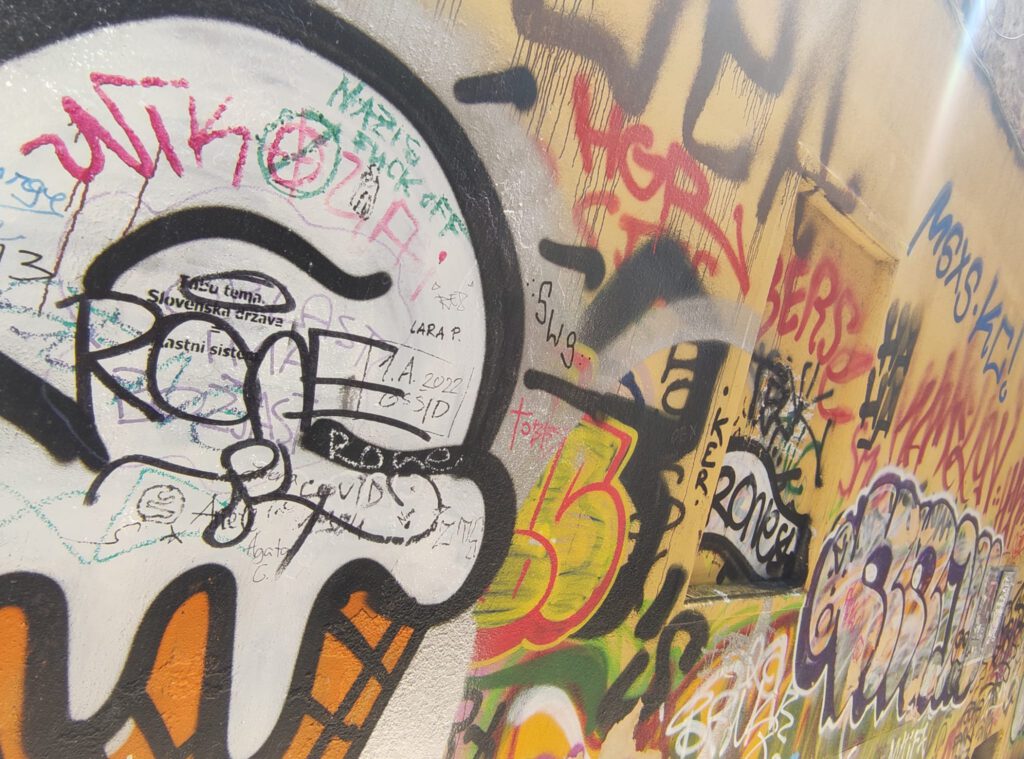The Story of Overlay Graffiti: Layers of Urban Expression
Overlay graffiti is a dynamic and visually complex form of street art that involves layering different graffiti styles and elements to create multifaceted, eye-catching compositions. This technique not only adds depth and texture to the artwork but also tells a story through the interplay of various artistic influences.
The Concept of Overlay Graffiti: Overlay graffiti involves applying multiple layers of graffiti on a single surface, often combining different styles, colors, and techniques. Artists might start with a base layer of simple tags or abstract shapes and then build upon it with more intricate designs or additional layers of graffiti. This approach creates a rich, textured surface where the various layers interact, overlap, and blend, resulting in a vibrant and complex visual narrative.
Origins and Development: The practice of overlaying graffiti began to gain traction in the 1980s and 1990s as graffiti artists experimented with new ways to expand their creative boundaries. Influenced by earlier styles of street art and abstract expressionism, overlay graffiti emerged as a way to add complexity and depth to traditional graffiti. This technique allowed artists to explore the interaction between different visual elements and to make their work stand out in the urban environment.
Key Characteristics and Techniques: Overlay graffiti is defined by its layered approach. Key characteristics include:
- Layering: Artists apply multiple layers of paint, each layer adding to or altering the previous one.
- Texture and Depth: The accumulation of layers creates a tactile and visually engaging surface.
- Contrast and Harmony: The interaction between different styles and colors can create striking contrasts or harmonious blends.
- Evolution: Over time, overlay graffiti can evolve as new layers are added, transforming the artwork into a dynamic and ever-changing piece.
Cultural and Artistic Impact: Overlay graffiti has made a significant impact on the street art scene by pushing the boundaries of traditional graffiti and introducing new ways of interacting with urban spaces. This technique highlights the evolving nature of street art, where artists continuously adapt and innovate. Overlay graffiti also reflects the complexity of urban environments, where different elements and influences coexist and interact.
Notable Artists and Works: Several artists are renowned for their mastery of overlay graffiti. “Banksy,” known for his politically charged street art, often uses layering techniques to add depth and commentary to his works. Similarly, “Rone,” an artist from Melbourne, combines portraiture with layered textures to create hauntingly beautiful images on urban walls. Their work exemplifies the creativity and versatility of overlay graffiti.
Public Perception and Challenges: While overlay graffiti is celebrated for its artistic complexity, it can face challenges related to public perception and legality. Some viewers may find the layered aesthetic overwhelming or chaotic, while property owners and municipal authorities may see it as a form of vandalism. Despite these challenges, the growing acceptance of street art as a legitimate art form has helped to mitigate some of the negative perceptions associated with overlay graffiti.
The Future of Overlay Graffiti: The future of overlay graffiti is bright as artists continue to explore new techniques and technologies. Advances in paint and application methods, as well as the increasing recognition of street art in the mainstream art world, are likely to drive further innovation in this style. Overlay graffiti will continue to be a vibrant and influential part of the urban art landscape.
Conclusion: Overlay graffiti is a captivating form of street art that combines layers of style, color, and technique to create visually rich and dynamic artworks. By building upon previous layers, artists create complex and evolving pieces that reflect the multifaceted nature of urban environments. As this technique continues to develop, it will remain an exciting and influential aspect of street art.
